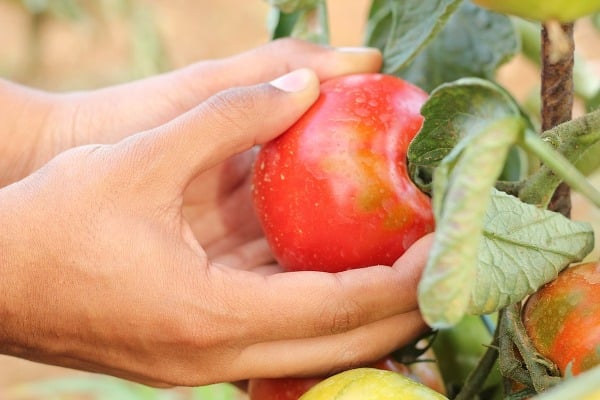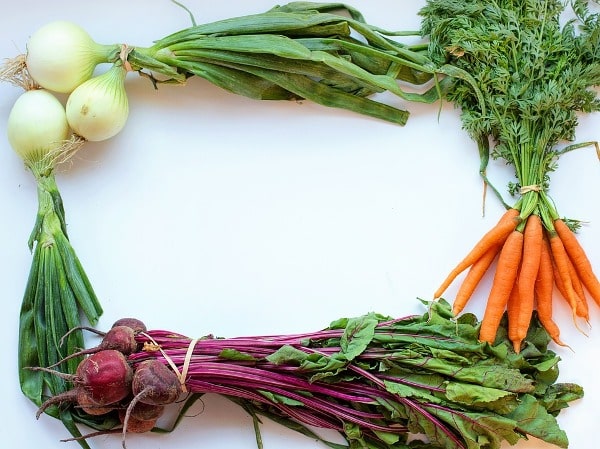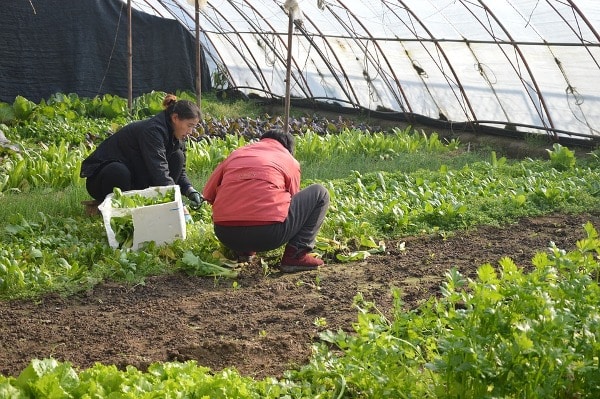Harvesting Techniques of fruits and vegetables
Let us discuss various harvesting techniques of vegetables and fruits in your farm/garden.
There would be a heavy loss economically if harvesting, transportation, and distribution of fruits and vegetables are not done properly. If the losses caused in the post-harvest phase gets reduced, then there would be a decrease in the dependency on importing the commodity pesticides, fertilizers and other sorts of chemicals which would subsequently save a good amount of foreign exchange. It is predicted that the complete loss of fruits and vegetables in India is because of inadequate handling of post-harvest transportation at less than 25%.
The significance of the reduction in the loss of post-harvest of fruits and vegetables has great importance in countries like Malaysia, India and the knowledge about the management of post-harvest and fruits and vegetable loss.
There are various factors which influence the losses caused in post-harvest because of the mechanical, physical, physiological and hygienic conditions. The vegetables and fruits are featured by activities which are highly metabolic and are popular in possessing less shelf life. The latest development has increased the shelf life of vegetables and fruits.

This is one of the main operations which decides the quality along with the life of storage of the produce. Harvesting also helps in the prevention of huge loss of fruits. Fruit harvesting should be done at the best stage of maturity. At the time of operations of harvest, a very good level of field hygiene must be maintained. This has to be done in a careful manner at the correct time without causing any damage to the fruits. The operation of harvesting consists of :
- Identifying and judging fruit maturity.
- Selecting the fruits which are matured.
- Separating the fruits from the tree
- Collecting the fruits which are matured.
Harvesting tools:
As per the types of fruits and vegetables, various devices would be used for the harvest of the produce. The most commonly used tools for the harvest of fruits and vegetables are knives, picking shears which are handheld or pole mounted. The fruits and vegetables would be tough to catch sometimes, so for that, a material which is made of cushion would be kept surrounding the tree so that the damage to the fruit can be prevented when they are falling from the trees which are tall or high.
Harvesting bags will be used for the fruits which have firm skins like avocado and citrus. These bags should be in such a way that they can be wore to a shoulder or waist. These types of fruits would be very comfortable to carry and the hands can also be left free. The contents in the bag can be emptied from the bottom part of the bag into a container without tearing it. The buckets which are made of plastic would be more suitable for use as containers for the purpose of fruit harvesting which can be crushed easily like tomatoes. These containers must have to be very smooth and they should not have any edges which are sharp which would cause damage to the product. Commercial farmers will use bulk bins which have a capacity of 200 to 500 kgs in which the crops like apples are placed and these will be sent to selection, packing and grading for large-scale packing houses.
Packing and Transportation:
Berries which are taken for the market are harvested in a mechanical way and are generally packed in shipping containers. Harvesting, handling, and transportation should be done in a careful way for fruits and vegetables when they are sent to packing houses. These are very necessary to maintain the quality of the product.
Polythene bags:
Polyethylene bags are used for the package of banana bunches and their transportation is done to the packing house by making use of mechanic cableways which are passing through the plantation of banana. The packaging and transportation techniques of banana will decrease the damage caused to the fruit due to improper handling.
Field boxes which are made of plastic:
These boxes are generally prepared by using polyvinyl chloride, polyethylene. This is because they are durable and will last for several years. Many of these are created in such a way they live inside each other and get emptied in order to provide transport and can live on top of each other without getting crushed when the fruit is full.
Field boxes which are made of wood:
The boxes which are made of wood in thin pieces and these are bound by using a wire. These boxes will come in two sizes. One is bushel whose volume would be 2200 cubic meters and the half bushel box. There are beneficial as they can be used for flat packaging and are less in cost. Hence they are not returnable. The disadvantage is that they provide less protection to the produce at the time of transportation. The wooden boxes will be rigid and their capacities will be different. These are most commonly used for the transportation of produce to the market or packing house.
Bulk bins:
Bulk bins will have a capacity of up to 500 kilograms and are used for the harvest for fruits and vegetables which are fresh. These bulk bins are more economically friendly than the field ones in terms of the fruits carried for one unit of volume and durability and also in giving good protection to the product at the time of transportation to the packinghouse. These boxes are made of both wood and also plastic.
These bins have the dimensions of 50 x 38 inches in the United States and 140 x 120 cm in the countries which have metric systems. The depth of the bulk bins approximately will be completely based on the fruit type and the type of vegetable which is being transported to the market.
Harvest indices:
There would be no improvement in the quality of fruits and vegetables, but the presentation of the same can be done at a perfect maturity stage. The fruits which are immature will give bad quality when they are harvested.
In few situations, if the shipping of the produce should be done to markets which are at distant locations to get a good price, the fruits and vegetables have to be picked in a mature stage but when they do not ripen. This would be tough as irrespective of the stage of ripening, the boundary which is present in between the premature and mature stage is very hard for detection. There would be no significant changes in terms of firmness or colour and the indices of harvest will become subjective.
Harvesting of various fruits and vegetables:
Banana:
- The trunk of the banana will be cut off by making use of a hatchet over the halfway across the stem.
- The bunch would not fall to the ground and hence the injury can be avoided. The bunch will be held and the peduncle will be served.
- Almost 25 cm of the stalk should be left for the handling to be easy.
Mango:
- The harvest should be done manually by using hand to as maximum as possible. The twisting of fruits will be done to the side or in the upward direction in a sharp way.
- The trimming of pedicel is done and is made very short so that it would not puncture other fruits. The harvester of mango will harvest the fruit which is borne on the branches which are high.
Coconut:
- In India, harvesting of coconut is done by climbing the trees. The climber will use a ladder. After he climbs to the top of the ladder, he will make use of a rope ring and ties it around the feet for the purpose the climbing the tree. When he reaches the crown, he will harvest the nuts which are matured.
- In Sri Lanka, the harvest of coconut is done from the ground by making use of a knife which is attached to a bamboo pole which is long.
- In Thailand and Malaysia, the monkeys will be trained for the purpose of harvesting.
Arecanut:
- Harvest of Arecanut is done by climbing by making use of the ladder and rope ring. When the climber reaches the top, he will start harvesting the bunch which is matured by making use of a knife.
Read: Arecanut Cultivation.
Sapota:
- The sapotas which are matured completely will be harvested by making use of the stalk intact, in an individual way by giving them a twist and collection is done without any brushing.
- Original harvester of sapota called as Dapoli has to be put in use in order to avoid the losses which occur in the post harvest.
Papaya:
- The harvest of papaya is done by twisting it on the trees which are dwarf. The operation of harvesting can be carried out without any sort of mechanical aids.
- Ladders will be used more often for harvesting tall trees. Poles should not be used for the purpose of harvest. The trimming of peduncle should be done before getting panic.
Jackfruit:
- If the jackfruit is in the reach, cutting can be done by making use of a unit which is twisted or a sickle. In the trees which are tall, placement of sack is done on the fruit by making use of a rope which is tied on the peduncle.
- After cutting is done, the fruit would be slowly lowered to the ground.
- The fruit will be laid on the peduncle for few minutes in order to let the flow of latex and also allow it to coagulate.
Cashew:
- Collection and harvest of the cashew nuts are done for a time period of 12 weeks approximately. Apple will not be collected and the fruits will not be let to fall on the ground and the collection of nuts is done at the time of the first 6 weeks. Later on, most of the cashew nuts will be collected in the trees. At the end of the season, the cashew nuts will be collected again from the ground.
Read: Cashew Nut Farming Project Report.
Ber:
The harvest of Ber is done from November to March in various parts of the country. The harvest will be done early in South India and lately in North India. The peak time for harvest in the North side of India is from February to April. The picking of fruit should be done from the maturity stage itself.
Guava:
- Employment of hand-pulling is done.
- The branches which are high can be reached with the help of a ladder. The collection of fruits is done by using a basket.
- Picking of the fruits is done for 2 times in a week at the time of harvest of approximately 10 weeks.
Grapes:
The harvest of grapes is done when they are ripened completely. At the time of harvesting, the clusters which are present should be taken off from the vine by cutting them by making use of a knife near the place where it is attached to the cane. Handling of the cluster should be done by the stem.
Pomegranate:
The harvest of the pomegranates is done manually after they reach the proper stage of maturity.
Mandarin:
In India, fruit picker will be put in use for the collection of fruits in a manual way by climbing the ladder when the tree is tall by wearing a bag on the shoulder for collection. In the United States of America, the harvesting is done in a mechanical way mainly in the industry of processing.
Pineapple:
The harvest of pineapple should be done by making use of a knife which is sharp and which severs the stalk of the fruit with a clean cut and retains the stalk of at least 5 cms.
Read: Pineapple Farming Project Report.
Custard Apple:
The harvest of custard apple can be extended from September to November and this is completely based on the flowering period. The harvesting of custard apples is done in a manual method.
Cabbage:

The heads of the cabbage is cut by making use of a knife in a frequent manner which is attached with wrapper leaves.
Cauliflower:
The curds will be sliced off from the stalk by making use of a knife. The leaves which are large are trimmed till there is enough jacket leaves remained for the protection of curd.
Brinjal:

The harvest of the brinjal is done from the plant by cutting it by making use of a sharp knife or pruning shears. The calyx which is fleshy and a piece of the stalk will be left attached to brinjal.
Carrot:
The carrots produced for the market will be pulled out when they are developed partially. They are harvested when there is enough moisture in the soil by making use of a spade. The trimming of roots is done and the carrots are washed prior sending them to the market.
Onion:

If the bulbs are matured, these will be pulled in an easy way by making use of hand if the soil is not that hard or else, they have to be dug by making use of a shovel.
Garlic:
The lifting of the bulbs is done manually, these are made clean and the leaves will be tied at the top. The drying of bulbs is done for seven days by keeping them in shade.
Read: Custard Apple Cultivation.